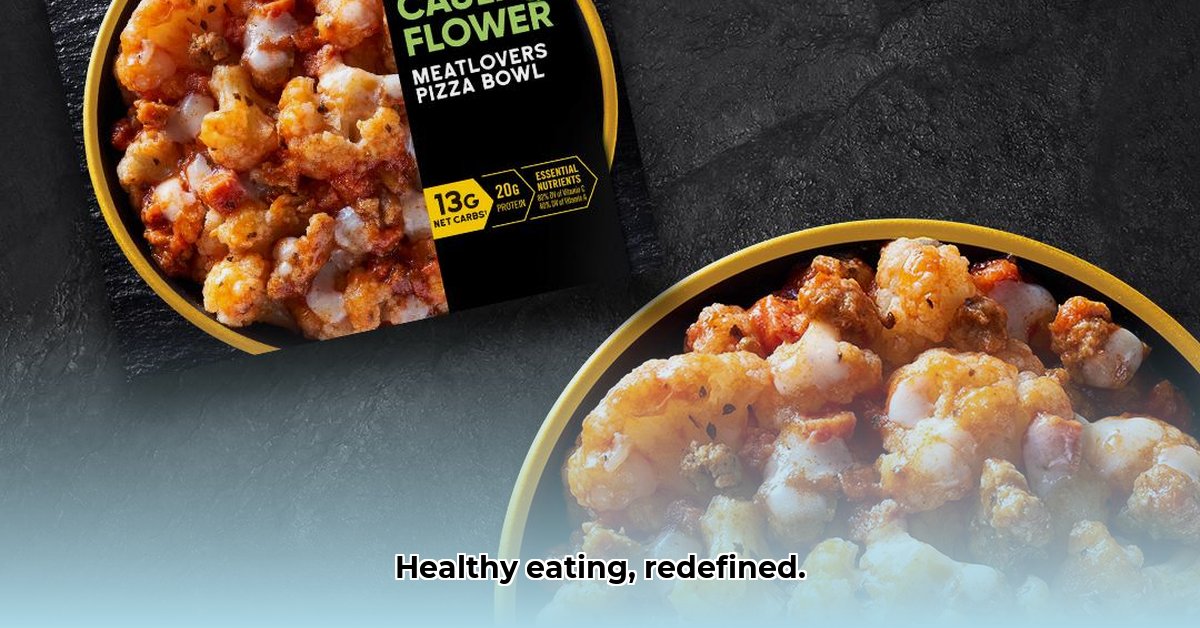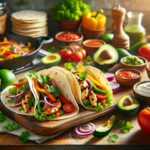Nestlé is making waves in the frozen food market with the launch of Life Cuisine and a renewed focus on Lean Cuisine. This strategic move directly addresses the increasing consumer demand for healthy, convenient meal options that don’t compromise on taste. But is this just another fad, or a genuine shift in how we perceive frozen food?
Beyond TV Dinners: Exploring the World of Life Cuisine
For many, the words “frozen dinner” conjure images of bland, uninspired meals lacking nutritional value. Life Cuisine aims to shatter this stereotype by offering a range of flavorful and nutritious meals tailored to meet a variety of dietary needs and lifestyle choices.
A Paradigm Shift in Frozen Food
Life Cuisine isn’t just about convenience; it’s about providing options. With categories including low-carb, high-protein, gluten-free, and meatless meals, Nestlé is broadening the appeal of frozen food to a much wider audience. This approach seeks to capture a larger share of the market by directly catering to specific, often overlapping, dietary preferences.
The Core Principles of Life Cuisine
The brand’s core philosophy centers around delivering both taste and nutritional value in every bite. By using high-quality ingredients and drawing inspiration from restaurant-style recipes, Life Cuisine bridges the gap between convenience and healthy eating. Nestlé is betting big that consumers are ready for a frozen food revolution, and this commitment is a significant first step.
Strategic Implications for Nestlé and the Frozen Food Industry
Nestlé’s success hinges on effectively communicating the value proposition of Life Cuisine to health-conscious consumers. Convincing consumers that these meals offer more than just convenience – that they are a legitimate part of a healthy lifestyle – will be crucial. This launch could potentially redefine the entire frozen food sector.
The Future Landscape of Frozen Foods
The ongoing success of Life Cuisine and Lean Cuisine will depend on their ability to adapt to evolving consumer tastes and dietary trends. This means continuous market research, innovative flavor combinations, updated meal options, sustainable packaging solutions, and potentially, international expansion. As other companies respond with their own healthy alternatives, the competitive landscape will undoubtedly intensify, driving rapid innovation within the frozen food industry.
Comprehensive Stakeholder Impact Analysis
The introduction of Life Cuisine has far-reaching consequences for various stakeholders, influencing both short-term strategies and long-term goals:
- Nestlé (Marketing): Fine-tuning marketing campaigns to resonate with specific dietary groups, leveraging influencer collaborations to build trust and brand credibility, and utilizing digital channels for targeted advertising.
- Nestlé (Product Development): Continuously analyzing sales data and consumer feedback to refine existing recipes, exploring new and innovative ingredients, and developing eco-friendly packaging options that align with sustainability goals.
- Consumers: Evaluating nutritional information and ingredient lists carefully, sharing their experiences through online reviews and social media to inform other consumers, and demanding greater transparency from food manufacturers.
- Retailers: Optimizing shelf space to accommodate the growing demand for healthy frozen meals, partnering with Nestlé on promotional campaigns, and monitoring sales data to identify top-performing products.
- Competitors: Closely monitoring Nestlé’s strategies and market performance, identifying opportunities to differentiate their own products, and considering strategic alliances, mergers, or acquisitions to strengthen their competitive position.
The launch of Life Cuisine represents a bold move by Nestlé, but its ultimate impact on the frozen food industry is yet to be determined. Continuous monitoring of consumer preferences, competitive dynamics, and emerging market trends will be essential for ensuring its long-term success.
Decoding Healthy Frozen Entrees for Effective Weight Management
Selecting the right frozen meals can be a valuable tool for weight management, but careful consideration is key. Focus on meals that provide a balance of macronutrients, are low in sodium and added sugars, and feature recognizable, whole-food ingredients. Can frozen meals truly be a cornerstone of a healthy eating plan?
Navigating the Nutritional Minefield
Not all frozen meals are created equal. While some offer a convenient way to obtain essential nutrients, others can be calorie-laden traps that sabotage your weight loss efforts. The key is to become an informed consumer and develop a critical eye for nutritional information.
Mastering the Art of Nutrition Label Reading
The nutrition facts panel is your most valuable tool. Prioritize meals that offer a substantial amount of protein (at least 20 grams), a good source of fiber (at least 6 grams), a moderate amount of sodium (under 600mg), and minimal to no added sugars.
Ingredient Quality: The Foundation of a Healthy Meal
Pay close attention to the ingredient list. Look for meals that feature whole, recognizable foods such as lean proteins, vegetables, and whole grains. Be cautious of meals with lengthy lists of additives, preservatives, and artificial ingredients, which often indicate that the product is highly processed.
A Holistic Approach to Frozen Meal Consumption
Healthy frozen meals should complement a well-balanced diet and regular physical activity. Supplementing frozen meals with fresh fruits, vegetables, and whole grains will help ensure that you are meeting your nutritional needs and supporting your overall health. Can convenience and healthy eating truly coexist in the frozen food aisle?
Smart Shopping Cheat Sheet for Frozen Meals
Use this quick reference guide to evaluate frozen meal options:
| Feature | Ideal Choice | Avoid |
|---|---|---|
| Protein | ≥20g (or more) | <15g |
| Fiber | ≥6g (or more) | <3g |
| Sodium | <600mg | >700mg |
| Added Sugars | 0g or minimal added sugars | High levels of added sugars |
| Ingredient List | Whole, recognizable ingredients, minimal processing | Long list of unidentifiable additives, highly processed |
Making informed choices about frozen meals is paramount for achieving your weight-loss goals and maintaining a healthy lifestyle. It’s about finding the right balance between convenience and nutrition.
A Closer Look at Life Cuisine Meal Options for Gluten-Free Living
Nestlé’s response to evolving health trends is clearly reflected in its Life Cuisine and Lean Cuisine product lines. Life Cuisine, in particular, offers a diverse array of gluten-free options, catering to the growing number of individuals with celiac disease, gluten sensitivity, or those simply seeking to reduce their gluten intake. Are these gluten-free meals a game-changer for those with dietary restrictions?
Addressing a Spectrum of Dietary Needs
Nestlé’s strategic move directly addresses the increasing consumer demand for meals that cater to a wide range of specific dietary needs, including gluten-free, high-protein, vegetarian, vegan, and low-carb options. Life Cuisine is leading the charge with an expanded selection of choices for individuals with specific dietary restrictions.
Ingredient Innovation and Creative Formulations
Life Cuisine sets itself apart by utilizing innovative ingredients such as cauliflower crusts, chickpea pasta, and other gluten-free alternatives. These ingredients not only create exciting flavor profiles but also maintain a strong focus on nutritional value. Lean Cuisine complements this approach by revamping existing recipes and increasing portion sizes, demonstrating a commitment to responding to consumer feedback.
Examining Market Trends, Opportunities, and Potential Challenges
The ultimate success of these relaunches hinges on strong consumer demand for healthier meals, convenience, and a growing awareness of the importance of nutrition beyond simple calorie counting. Potential challenges include pricing concerns that may limit accessibility for some consumers and the need to prioritize long-term sustainability in sourcing ingredients and packaging materials.
The Future Potential of Life Cuisine and Lean Cuisine
The future of Life Cuisine and Lean Cuisine depends on continued strategic innovation, a deep understanding of evolving consumer needs, and a commitment to sustainability. The brand’s responsiveness to consumer demands positions it for continued success in the dynamic market for healthy, convenient meals. Can Life Cuisine and Lean Cuisine maintain this momentum and continue to lead the way in the frozen food industry?
Leveraging Convenient Life Cuisine Recipes for Busy Professionals
Life Cuisine provides a valuable resource for busy professionals seeking convenient and nutritious meal options that fit their demanding lifestyles. This relaunch places a strong emphasis on mindful eating, even amidst hectic schedules and time constraints. But does Life Cuisine truly meet the needs of time-constrained individuals without compromising on quality and nutrition?
Addressing the Pressures of Time and Convenience
In today’s fast-paced world, many individuals struggle to balance the demands of work, family, and personal life, making meal preparation a significant challenge. Acknowledging this reality, Life Cuisine offers a range of recipes that are designed to be quick to prepare, nutritionally balanced, and flavorful.
Highlighting the Unique Value Proposition of Life Cuisine
Life Cuisine distinguishes itself by providing convenient solutions built on simplified recipes, quick preparation times, and nutritious ingredients. These factors combine to offer a compelling value proposition for busy professionals who are looking to prioritize their health without sacrificing valuable time. Can frozen meals truly offer a convenient and sustainable path to healthy eating?
Key Recipe Highlights and Distinguishing Features
Several factors contribute to the appeal of Life Cuisine recipes:
- Time-saving: Designed for speed and efficiency in meal preparation, allowing individuals to enjoy a healthy meal even on the busiest of days.
- Health-conscious: Prioritizing nutritious ingredients that contribute to a balanced diet, helping individuals meet their dietary goals.
- Flavorful options: Offering a diverse range of flavor profiles and culinary styles to ensure that meals are both satisfying and enjoyable.
- Variety: Providing a wide array of meal choices to cater to diverse taste preferences and dietary needs.
- Convenience: Ensuring easy access to Life Cuisine meals through multiple retail channels, making it simple for busy professionals to stock up on their favorite options.
- Stuck on ‘Heads of Ancient Rome’ NYT? CAPITA is the Answer (Here’s Why!) - August 16, 2025
- Unearth ancient rome roads: Empire’s power and modern highway’s origin - August 15, 2025
- Discover geography of ancient Rome: Empire’s secrets revealed (2024 insights) - August 15, 2025
















